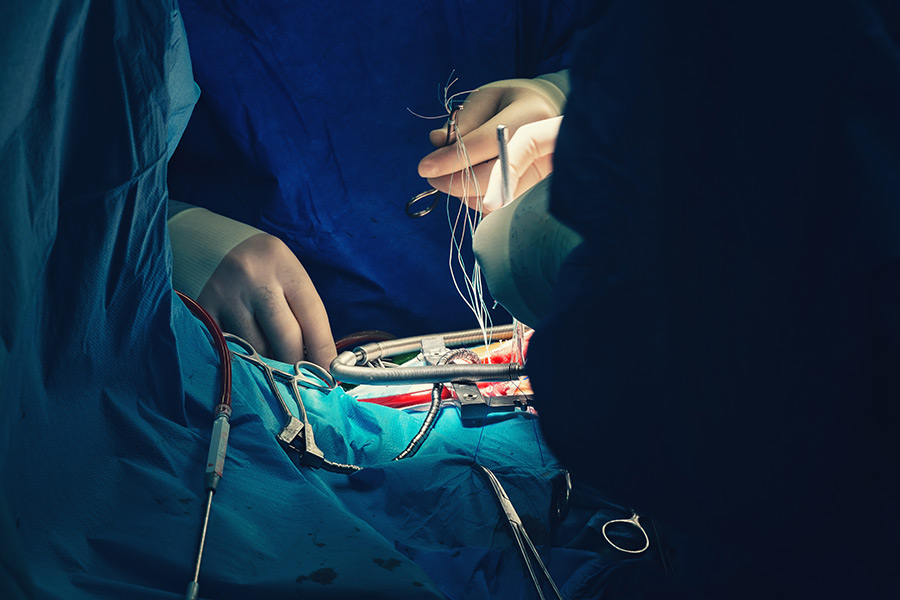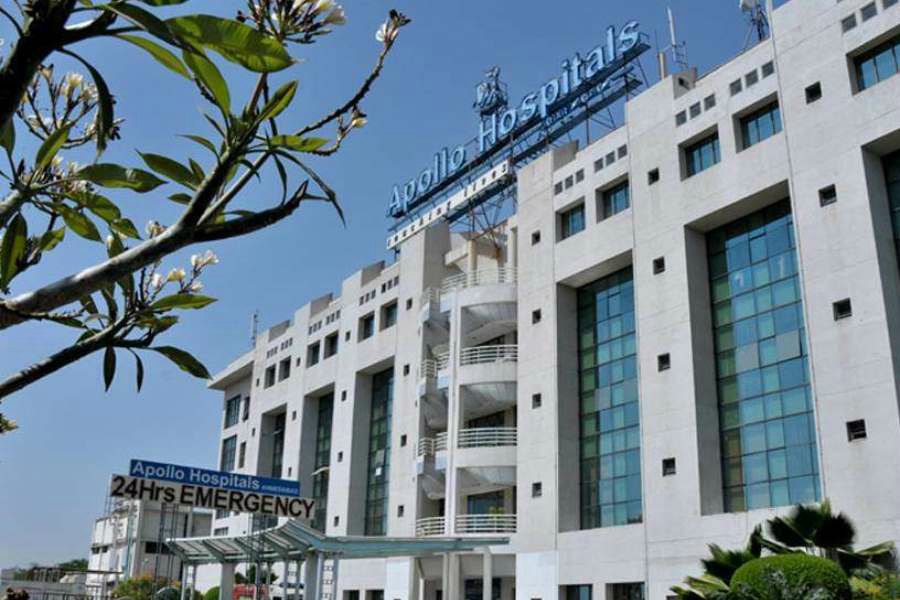
Overview
What is Aortic Valve Replacement/Mitral Valve Replacement?
The main pumping compartment of the heart (left ventricle) is connected with the main artery that supplies oxygen-rich blood to your body. The aortic valve is situated in between the aorta and the left ventricle and its job is to stop the backflow of the oxygen-rich blood into the left ventricle.
Likewise, the mitral valve is situated between the left chambers of the heart, the left atrium and the left ventricle. This valve functions as a unidirectional router of the blood coming from the left atrium to the left ventricle.
Reason for doing it
The treatments for different problems in these two valves are decided on the severity of the problem and with other associated factors. In some general cases, the physician may prescribe medical treatment rather than extensive surgery.
However, it has been seen that aortic valve issues and dysfunctions go on to become a greater problem even after prolonged medical treatment. Many problems arise due to mechanical conditions of the valves and eventually will need the skills of a proficient surgeon to reduce the symptoms and complications in this disease, not to mention drastic outcomes like heart attack, heart failure, stroke or even death due to myocardial infarction. In short, the problems and conditions that can cause suspicion in the physician taking care of you to prescribe one of their replacements can be surmised as:
For aortic valve:
- Aortic valve regurgitation: This is the condition when the blood flows backward through the aortic valve into the left ventricle every time the chamber expands, which is the direct opposite condition of a working aortic valve allowing only one-way direction of the blood to the aorta.
- Aortic valve stenosis: This is the phenomenon where the aortic valve has become constricted or has been obstructed by some kind of block that takes more force into pumping blood into the aorta.
- Structural issues: There may be some inborn structural problems that cause the blood to flow properly into each of the sites. The aortic valve may not have enough tissue flaps, the valve may be of wrong shape or size, and it may also be possible to not have an opening for the flow of blood to occur properly. This condition is known as atresia.
For mitral valve:
- Mitral valve prolapse: This is a condition during mitral valve regurgitation, where the mitral valve bulges back due to the backflow of the blood.
- Mitral valve stenosis: In this condition, the mitral valve leaflets may become thick, stiff, or may fuse together. This will cause a serious reduction in the flow of the blood and a narrowed valve.
Causes
There may be a blockage or imperfect development of the valves, such that the blood does not move freely and may also revert back to the preceding chamber. This may cause the blood to flow incorrectly or the heart to get stressed while pumping blood.
The primary reasons because of which the aortic valve may need to be replaced can be stated as;
- Congenital defects: At birth, the heart of a patient with aortic valve issues may not form properly. This may give rise to complications later in life.
- Age-specific changes: The structure and state of health of the heart changes with age. This may be also a primary cause for problems in the cardiac valves.
- Infections: Many bacteria like species of Streptococcus and Mycobacterium can colonize the cardiac tissue. The persistent infection can be cause for the valve replacement.
- High Pressure of the blood: The pressure of the blood flow is a contributing factor for the state of the valves of the heart and often acts as a two-way system. The blockage of the blood flow in the valves causes the blood pressure to rise; and likewise, high force of blood flow can hinder the function of the aortic and mitral valves.
- Injury to the heart: Although the heart is protected by the ribcage from the front of in the back, any injury to the cardiac tissues may cause problems in the functioning of the cardiac valves.
For mitral valves, one additional factor has been seen to act as a cause for replacement of the valve apart from the above-mentioned ones. If a person suffers from rheumatic fever, a complication from a Streptococcus infection in the heart, the mitral valve may become narrow, a condition known as mitral valve stenosis. Therefore, extensive consultation from physicians or cardiologists is the first step to cover, before going under the knife.
SYMPTOMS
The indications of aortic or mitral valve diseases vary according to the severity of the progression of the diseases. As both of the valves are structurally similar, the symptoms that can be indicative of a serious cardiac problem are also same in their characteristics. The basic indications that can be seen in the case of surgery for aortic or mitral valve replacement are listed as;
- Heart murmur (abnormal heart sound) heard through a stethoscope.
- Shortness of breath, particularly after intense activity or when you want to take rest.
- Lightheadedness
- Blackout
- Chest pain or constricting feeling in the chest
- Arrhythmia or Irregular heartbeat.
- Fatigue after intense activity or inability to perform a forceful activity.
- Reduced appetite (particularly in children with aortic valve stenosis)
- Low weight gain according to age. (primarily in kids with aortic valve stenosis)
- Inflammation of the appendages
DIAGNOSIS
Problems in aortic and mitral valves in the heart may not be detectable in less intense stages. However, physicians may prescribe the following tests for confirmatory detection for the decision of surgery;
- Echocardiogram: This exam can aid doctors to look at the state of the aortic valve, and the cause and severity of your illness. It can also help surgeons determine if you have any other heart valve illnesses.
- Electrocardiogram (ECG): This is used to detect inflated heart chambers and abnormal heart rhythms.
- Cardiac MRI: This test may be used to determine the size of the aorta and aortic valves, with complete images of the chambers and the valves.
Other tests like Chest X-ray, Exercise tests or stress tests, and Cardiac catheterization may be prescribed by the doctor according to the condition of the patient.
RISK FACTORS
Aortic or Mitral valve replacement is an invasive procedure so there are some risks involved. Without proper care or follow-up, there is a chance of the following to affect the patient:
- Bleeding
- Blood clots
- Valve dysfunction in auxiliary valves
- Arrhythmia
- Infection
- Stroke
- Death
POST-OPERATIVE CARE
- The patient would be in the intensive care unit (ICU) for a day or two.
- He or she will be given nutrition, medication, fluids through an intravenous route.
- A catheter may be placed to assist the voiding of urine and a sternal tube to relieve fluid and blood accumulated.
- The incision site will be monitored for any infection indication.
- Blood pressure, breathing, and heart rate will be checked periodically.
- Pain management protocol will ensue for any post-operative pain.
- Mild physical and breathing exercises may be given.
Depending upon the overall health, the recovery time may vary for different patients. The doctors may place a prohibition on driving a car or lifting heavy objects for a limited period of time. Usually it takes 8-12 weeks in total.
TREATMENT
After it has been ascertained that the treatment can no longer proceed with medicines, the physician will most likely go for replacement surgery. The directions the physician may give you to follow before and during the procedure are:
Before surgery
The team of caregivers will check your case history, any alcohol or drug use, past medical histories, allergies in medicine etc. Then they will check for any problems in your pulse or blood pressure.
Before the procedure, you will be given numbing agents at the location of the incision or will be made fully unconscious according to the type of surgery determined by the physician. Any personal items like jewelry, piercings, dentures, contact lenses will have to be removed during the procedure.
During the procedure
- You will be laid in a position with the chest facing upwards.
- The part where the incision is made will have body hair shaved off.
- You will be given anesthesia locally or will be made fully unconscious.
- You will be connected with a heart-lung bypass machine which will keep the flow of blood intact during the operation.
The time taken will depend on the procedure adopted, which may be one of the following;
- Open–heart surgery: The chest cavity is opened and the heart is exposed to the physician. The incision made for that is large and needs a few days for the stitches to dissolve. Any additional surgery other than the valve replacement may also be performed together.
- Minimally invasive surgery: The heart is accessed by smaller incisions in the patients’ body. However, this technique may not be applied every time. The surgeons will decide after reviewing your reports.
- Transcatheter aortic valve replacement (TAVR): The doctors may get an entry to the heart through a blood vessel in your leg or a slight slit in the chest. A catheter is directed through the veins to the aortic valve. Once it is placed correctly, a balloon-expandable or self-expandable auxiliary aortic valve is implanted. TAVR may be a possibility for people who are thought to be at a transitional or high-risk zone of difficulties from surgical aortic valve replacement. TAVR may also be an option for a replacement for an already existing biological tissue valve.
The same surgical regimen is followed in the case of mitral valve replacement.
FACTORS AFFECTING COST
The cost of the treatment may depend on the following factors;
- The charges of the implants
- The cost of medicines run
- The fees of the cardiologist and surgeons
- The cost of the life-saving instruments, operating room, residing ward etc.
- The type of surgery applied (open-heart, TAVR etc).
FAQ
This depends on the physician who is in charge of your surgery. In mechanical valves, you need to take blood-thinning medicines for the rest of your lives, whereas in tissue valves, no such drugs are needed.
Essentially, this is changing of your own cardiac valves with foreign mechanical or tissue valve. The basic procedure is such;
- You will be taken to the hospital’s operation theatre.
- You will be given anesthesia locally or will be made unconscious.
- Your body’s blood flow will be maintained by a heart-lung machine.
- The less functional valve of your body will be replaced.
Depending upon the following of the instructions of valve maintenance, the valve can operate from 15 to 25 years.
All standby heart valves are completely harmless to x-ray examinations.
Recovery time is dependent on many different factors, including the overall physical condition of the patient. Normally, it takes at least eight weeks to twelve weeks. Recovery may also differ from patient to patient. The patient should gradually return to his or her normal routine.


 Best Hospitals
Best Hospitals














